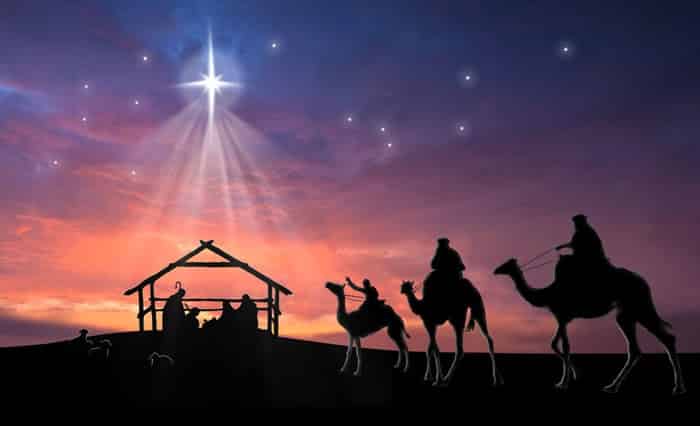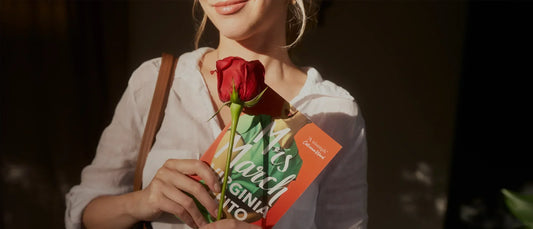
The 3 Kings - a very Spanish epiphany
When do you reach “peak” Christmas?
Every year, the Anglo Saxon world generally reaches “peak” Christmas on December 25th. This is when the “great unwrapping” begins. In North America, the stockings are hung out for St. Nick on Christmas Eve, cookies and milk are provided to entice him down your chimney. And if you’ve been really nice, then you can expect a reward. Maybe even a beautiful new pair of shoes. But it’s not like that everywhere. Other cultures stretch out their holidays for a bit longer.
Waiting for the Kings to arrive…
For many big kids, Christmas Day is just too long to wait. In some countries, kids just can’t seem to hold on for the big day itself and eagerly rip the wrapping off their gifts on Christmas Eve. But in some other cultures (especially across the Mediterranean) they have to wait even longer. In fact, in Spain, Christmas seems to go on and on, with many not returning to work until well after the Three Kings have arrived on 6th January.
Let’s start with the legend…
So, who are these Kings, what are they doing here and how do the locals celebrate the holidays in Viscata’s home town of Barcelona? Well, this seems like as good a time as any to explain the legend of the Reyes and why (in Spain) it’s an even bigger deal than Christmas Day itself.
In fact, in some parts of Europe (and many Latin American countries) the biggest day of the year isn’t Christmas at all. It’s actually El Día de Reyes - or as we like to call it, Epiphany. It falls on January 6th each year and marks the day when a group of mystical Kings from the East arrived in Bethlehem to welcome the new born baby Jesus.
They were led there by a star that guided them across the wilderness to welcome our saviour to the world with precious gifts. Tradition says that their journey finally culminated 40 days after the Christmas celebrations began, on January 6th. This parade marks the day when Melchior, Gaspar and Balthazar (the 3 Kings) arrived in the humble Bethlehem stable that was sheltering the baby Jesus and his unwitting parents Mary and Joseph.
Each of the Kings came to pay homage and each represented a different part of the known world including Arabia, the Orient and Africa. They arrived on horse, camel and elephant, as befitting their geographical origin and each of them brought special gifts including gold, Frankincense and Myrrh.
Shining the King’s shoes…
Their arrival is welcomed with great joy and expectation across the land as millions of kids begin the annual exercise of shining their shoes (hopefully Viscatas) on the evening before the Kings arrive. They then place them neatly outside their doors before they go to sleep in the hope that by the next morning, they will be filled with gifts.
However, that's only for the nice kids. The naughty ones are destined to receive a plain old lump of coal (or, if they’re lucky, a traditional black sweet called Carbon Dulce).
An ancient tradition
This is a tradition that stretches all the way back to the late 19th century. In fact, it was the town of Alicante who were the first to host the oldest of these parades. And every year since 1885, it has hosted its own event for which it is rightly famous. In common with other Christmas traditions from the world, sweet wine, snacks, fruit and milk are traditionally left for the “honoured guests”. It is also the day that most Spanish children open their presents (although the crafty ones will have probably already negotiated a double dip in advance!)
The arrival of the Magi…
But it’s when the King’s arrive that the fun really starts. All over Spain (and across much of Latin America) the arrival of the Magi is celebrated with extravagant welcoming parades. Children and adults gather together to throng the streets to cheer the procession and to see the spectacle of the Kings riding into town, liberally dispensing gifts to the crowds from their camels, horses and elephants.
The Barcelona tradition…
In Viscata’s home town of Barcelona, it’s a big deal. The Three Kings traditionally arrive in the Port of Barcelona by boat where they are welcomed by the Mayor and the gangs of eager kids. A few hours later, the crowds begin to swell along the route as they eagerly await the departure of the Cabalgata procession (the Cavalcade) which generally sets off at about 4.00pm.
Where tradition and technology twinkle and collide
The floats are draped and decorated using imagery drawn straight from the nativity and the exotic Magi greet the adoring crowds with characteristic flair and aplomb. The floats combine a canny combination of ancient themes and modern technology and often incorporate sophisticated light shows, festive music, exploding glitter and even fake snow.
The Kings are then carried through the town on their highly decorated festive floats. The music is turned up, the bands get ready and the procession sets off on its three hour journey across the city. It winds its way past the old town, twists and turns along Plaça de Catalunya and finally ends up by the Magic Fountain of Montjuic.
Candies, candies, candies…
All the while, the Kings and their helpers hurl handfuls of sweet candies into the expectant crowds. Kids sit on taller, wiser shoulders to ensure the best view of the show and to give themselves the greatest chance of catching some flying candy. In Barcelona, no expense is spared with candy for everyone and a dazzling display of lights and technology that bring this magical procession to life.
Spain’s famous Epiphany cake
And the fun is only just beginning. No household will be without its Reyes treats - the most traditional of which is the famous Epiphany cake. Known as Roscón de Reyes in Spanish and Tortell de Reis in the local Catalan language, this delicious cake is generally made in an oval shape. It’s decorated with a fruity mix of figs, cherries, candied fruits and quince giving it a lovely festive, seasonal feel.
Bakers often place a bean or a figurine of the baby Jesus into the cake mix before baking. Tradition dictates that whoever finds the baby Jesus figurine is blessed and must take the figurine to the nearest church on February 2nd (Candlemas Day), 40 days after the start of the Christmas season. If they fail to do so, they must host a party instead.
Keeping traditions alive - the Viscata Way
In this part of the world, they keep their traditions dear. It’s this respect for history and commitment to keeping their culture and values alive that ensure that history remains a living, breathing thing. A part of who they are. Inseparable from their very being.
At Viscata, we share this deep commitment to the region and we bring it to life every day through our stunning shoes, born out of this Catalan landscape and created with love and care by artisans whose families have been making shoes by hand for generation after generation. It is this deep connection to traditions and history that make Viscata unique. And just like the Kings, we know it’s important to keep it alive.


